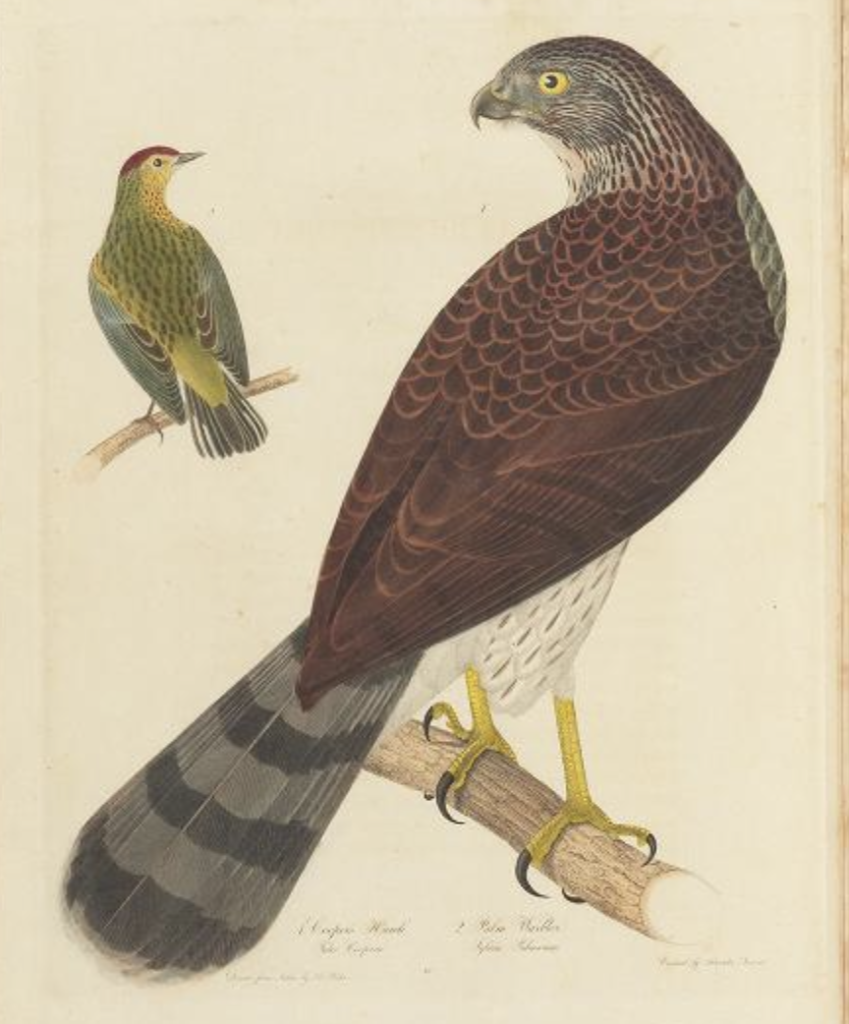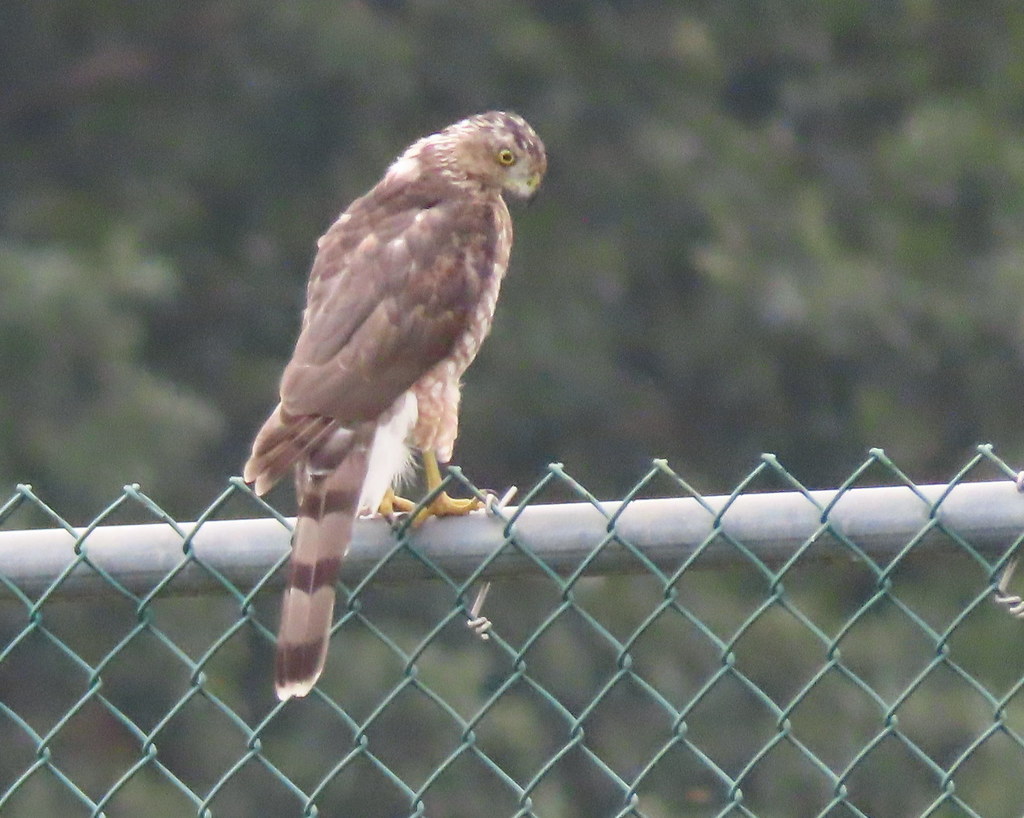
In my experience, the handsome gadwall is not a species given to much variation or aberration in color. This hen’s patchy white head and face was obviously no deterrent to her suitor.

The Experience of Birding

At Barnegat Light, on our Montclair Bird Club visit February 26. There are few places on the US east coast where harlequin ducks can be found so easily.
And much the same goes for another haunter of wintertime jetties, the sweet little Ipswich sparrow.

I am nearly tempted to rotate this photo 90 degrees, but this is really what they look like, scaling the granite blocks and picking through the seaweed in search of prey.
Just a few weeks left this year for both these species in the state, so get out before it’s too late!

Noisy and colorful, the eastern towhee appears to have been a well-known bird to early European settlers in North America. Indeed, this big and conspicuous sparrow was the subject of one of the first bird paintings ever made by a European naturalist on this continent.

The caption to this copy of John White’s sixteenth-century watercolor reminds us just how many folk names, and in how many languages, this bird has had over the centuries. I was reminded of another one this morning—one that I believe is attested in the writings of only one ornithologist.
In his manuscript list of the birds of Point Breeze, Charles Lucien Bonaparte calls the towhee “chitterwing.” On his return to Italy in 1827, he used the same name in the Specchio comparative, and it occurs again in the German-language reprint of that work in the 1834 volume of the Isis von Oken. In each instance, “chitterwing” is the only English name assigned the species.
It is very rare that a vernacular bird name turns out to be genuinely hapax in the ornithological corpus, but I think that this one is. Or have you run across it elsewhere? And if you have, what do you think its origin is?
Joan, Sally, and I met for a quick walk at Point Breeze this morning, hoping that the evening’s northerly winds had brought in some migrants. There were goodly numbers of blue jays and yellow-shafted flickers, but for whatever reasons, the smaller neotrops we’d been looking for just didn’t show themselves today.
For whatever reasons: the bird pictured below may have been one of them, hunting the low vegetation before flying up to perch in the twigs in front of us.

This fine adult (probably a male) Cooper hawk could hardly have chosen a more suitable place to show up, especially in this, the 225th anniversary year of the birth of the species’ eponym, William Cooper. For it was here, on the grounds of Point Breeze, that the type specimen was collected one late September day.
Charles Bonaparte, then living at Point Breeze with his wife and their family, had the bird drawn and engraved by Alexander Lawson, who, writes Bonaparte, had “outdone himself” in the “perfect accuracy” of his “delineation of this bird, in all the details of its plumage, bill, and feet.”

Bonaparte named the bird for William Cooper, the famous malacologist, who alongside other favors oversaw the publication of the American Ornithology on Bonaparte’s return to Europe at the end of 1826. Coincidentally, Bonaparte reports that Cooper himself collected what appears to have been the first female specimen of the species just a couple of months later on Long Island.
It would be too much by far to imagine that this morning’s bird was a descendant of Bonaparte’s type (especially given that that bird may have been shot before it was sufficiently mature to breed). But still I like to think that some accipitrine spirit dwells in the place.
I spoke to a pleasant woman in Bordentown this morning, who told me that access to Point Breeze is at present limited to the sidewalks between the new visitor center and the town hall—which hardly counts as access at all. But as soon as the state opens the woods and the ruins of the Bonaparte estate to the public, we’ll put together an excursion to explore the place together.

The past 24 hours have been pretty dismal here in northern New Jersey, with oppresive humidity relieved only by spells of steady drizzle. The rain finally stopped midday, though, and southwest winds and chokingly soggy air notwithstanding, I set out to Clarks Pond to see what I might see.
Woodland passerines were, no surprise here, tough to come by, but I was happy to find that there was some genuine vismig going on overhead, no doubt birds stalled by the nasty weather eager now to have a meal and move on. Barn swallows and chimney swifts were never out of sight, and the afternoon’s highlight was easily the three purple martins that passed over at a height clearly meant to put the lie to the “vis” in “vismig.”
Raptors were moving, too. Not in big numbers by any means, but I wound up tallying half a dozen species, including single representatives of the black vulture and red-shouldered hawk. The final bird of my hour and a half out and about was a juvenile Cooper hawk, hunting the ball fields behind the middle school and being mercilessly harried by American crows. This is far and away our most abundant accipiter, winter, spring, summer, and fall, but always well worth looking at, especially so big and so dashing a bird as this female (she was exactly the bulk of the crows next to her, impressively large even for a hen).

As usual, the bird was not shy at all, hunger obviously overcoming whatever apprehension she may have felt in my presence. I took the opportunity to get great looks as she moved from backstop to fence to bleachers, and was struck above all by the pattern of her under parts.

Famously, juvenile Cooper hawks can usually be distinguished from their smaller (and their larger) congeners by the fine streaking of the breast and belly; sharp-shinned hawks and goshawks are characteristically blobby and blurry beneath, in the former species sometimes even creating the impression of adult-like barring.
By no stretch of the imagination could this afternoon’s bird be described as “pencil-streaked.” Instead, from every angle, she was clearly coarsely barred on the flanks and lower breast, more heavily marked on the sides and center of the upper breast. I cannot recall ever having seen a juvenile Cooper hawk marked like this, though, of course, some individuals are more broadly streaked below than others, and a quick “image search” finds birds not dissimilar.
Still, a nice reward for venturing out into the tropical stickiness.